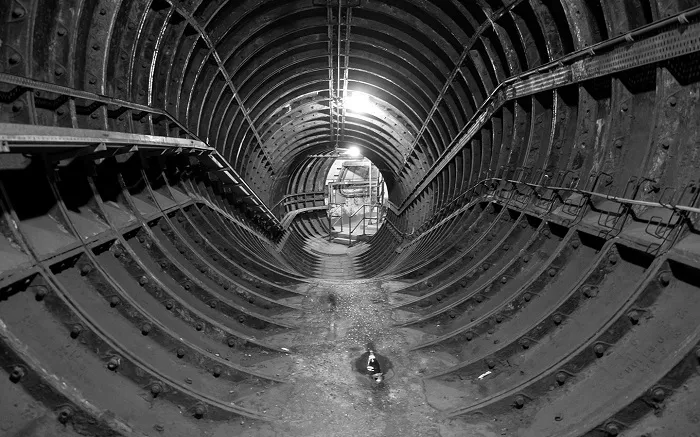A series of secretive tunnels beneath London’s Chancery Lane, once protected by the UK’s Official Secrets Act, are set to become one of the city’s most ambitious new tourist destinations. The mile-long network of tunnels, located 30 meters (nearly 100 feet) underground, is rich in history and once served as a shelter during World War II, a communications hub during the Cold War, and even inspired elements of the James Bond series.
The tunnels’ history is both fascinating and varied. Constructed between 1940 and 1942 as a deep-level air raid shelter, the underground space was designed to protect Londoners during the Blitz, the German bombing campaign that caused devastating losses in the city. The shelters, built by hand, were intended to house those seeking refuge from the bombing above. However, the tunnels were never used for their original purpose after Germany redirected its invasion efforts eastward toward Russia.
For much of its post-war history, the tunnels were used for classified government operations. The British Special Operations Executive, a covert military unit, occupied the space during World War II. Ian Fleming, the author of the James Bond novels, worked in the tunnels as a British Navy liaison officer in 1944. The area also hosted the Kingsway Telephone Exchange, a crucial communications facility during the Cold War that maintained a direct “hot line” between the United States and the Soviet Union during tense moments like the Cuban Missile Crisis of 1962.
Today, the tunnels are poised for a major transformation. London Tunnels CEO, Angus Murray, envisions the space becoming a multi-faceted cultural hub. The planned $149 million redesign will feature a museum, memorial, art gallery, and even the world’s deepest licensed bar. The project is being spearheaded by a team of architects from Wilkinson-Eyre, known for their work on Singapore’s Gardens by the Bay and London’s Battersea Power Station.
Murray’s vision includes preserving the tunnels’ rich history while creating an immersive experience for visitors. The History and Heritage section will showcase the various periods of the tunnels’ past, including their wartime use and role in Cold War communications. The tunnels’ role as a critical communications hub is reflected in the numerous vintage machines and equipment left behind, including large generators and complex phone systems, many of which will be on display for the public.
“We’ve kept anything that might interest people,” Murray explains, pointing to the remnants of the Cold War-era infrastructure, which are poised to become integral parts of the visitor experience.
The site is expected to draw tourists from around the world, offering a rare glimpse into London’s secretive past, and providing a stunning example of how the city’s underground spaces can be repurposed for the modern age. The tunnels’ transformation is one of the most ambitious heritage projects currently underway in the UK, with a timeline that will see the new attraction open in the coming years.
As this hidden chapter of London’s history prepares to open to the public, it promises to add a new layer to the city’s already rich cultural landscape, combining history, art, and innovation in one extraordinary space.

